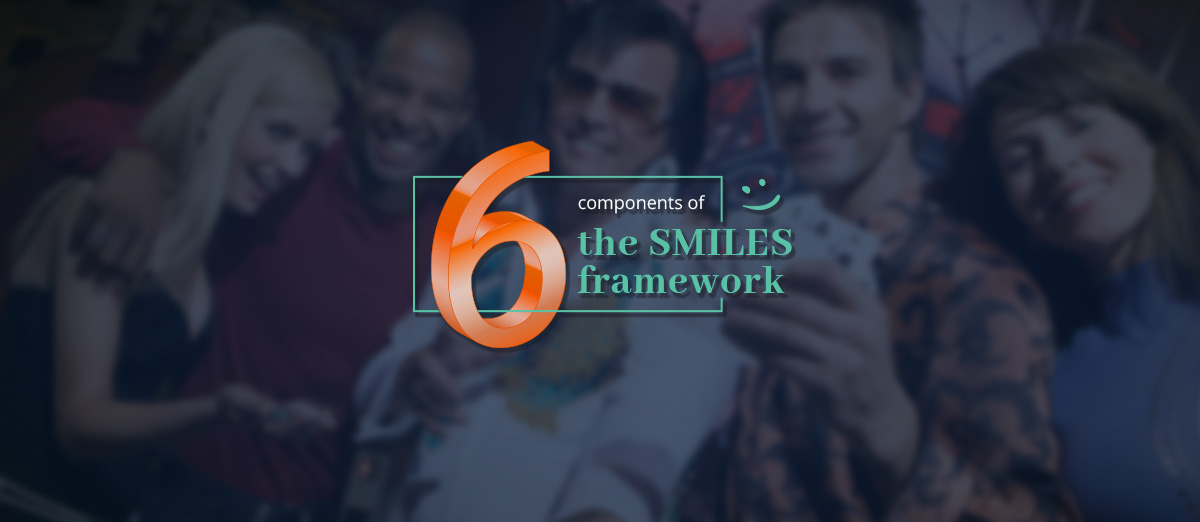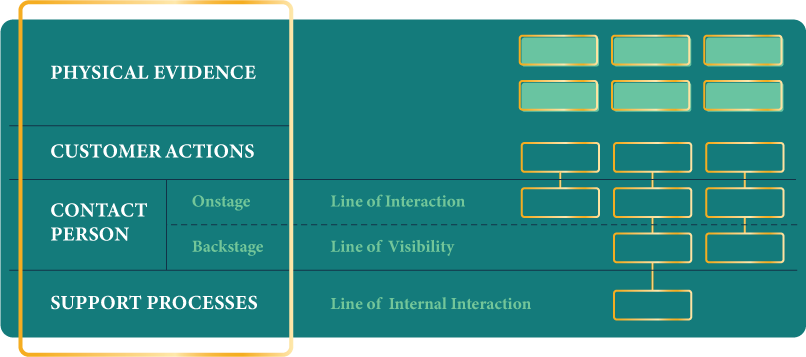How to Provide Your Customers the Best Casino Experience – The SMILES Framework

Customer experience (CX) is the only remaining source of sustained competitive advantage. Yet, most integrated casino resorts only pay lip-service to customer experience. This article presents the S-M-I-L-E-S framework for delivering superior CX and discusses six key ingredients needed for delivering a consistently superior customer experience. These ingredients are Segmentation, Market orientation, Internal marketing, Linkage analysis, Emotional competence, and Service blueprinting.
Introduction
The casino industry all over the world has been seriously impacted by the COVID-19 virus. From Melbourne to Macau and Las Vegas to Lisbon, the industry is experiencing extreme volatility and uncertainty. Even in markets such as the United States, where quarterly casino revenues have hit a new record, operators are unsure how their properties will fare in the future once pent-up demand subsides. Customer loyalty has been one of the casualties of COVID-19, as corroborated by Synergy Blue’s survey of U.S. gamblers. To make matters worse, another US$65 billion has been pledged to developing new integrated casino resorts through 2025 in Asia alone.
Clearly, the current turbulent environment combined with the massive added capacity will result in an intense financial shake-up within the global gaming industry. Mergers, acquisitions, and some inevitable bankruptcies will occur. We are already beginning to see signs of this phenomenon with casino companies such as Silver Heritage Limited, Imperial Pacific International, and Donaco International, all operating in Asia.
Going forward, casino operators all over the world will need to protect their customer franchises by offering their guests the best possible customer experience. The current “build it and they will come” orientation will have to be replaced by a strategy driven by customer-centricity and understanding of customer expectations. With around 90 percent of businesses in other industries compete primarily on customer experience, the casino industry will have to undergo a steep learning curve to get on par with other sectors. After all, as Gartner pointed out back in 2015, customer experience is the only remaining source of sustainable competitive advantage.
What Is Customer Experience (CX)?
Customer experience has been defined in many different ways. For a company to put the concept in practice, there needs to be an agreement across the organization as to what CX actually means. Quite often, CX is equated with customer service or customer satisfaction. While each of these concepts is interrelated, they are not synonymous. A widely accepted definition of CX is, “Customer experience is the composite of a customer’s cognitive, emotional, sensory, behavioral, and social responses to a provider’s offerings.”
What’s important to bear in mind when reading this definition is that a business may offer to the customer what it thinks would be a great experience, but it is the customer alone who is the arbiter of the experience received. Since all customers are somewhat different in their background and expectations, no single offering on the part of the provider will appeal to everyone.
An integrated casino resort may attract different types of clients such as gamblers, conventioneers, business travelers, tourists, and partiers, to mention but a few. To understand and operationalize the underlying logic of CX, I have proposed the S-M-I-L-E-S Framework. This framework encompasses six components crucial for offering a distinctive customer experience.
The six components of the SMILES framework are:
- Segmentation
- Market Orientation
- Internal Marketing
- Linkage Analysis
- Emotional Competence
- Service Blueprinting.
These six components are depicted in Figure 1.

Figure 1: The S-M-I-L-E-S Framework
Segmentation
As mentioned earlier, an integrated casino resort will attract customers with differing needs and expectations. In order to understand and effectively cater to the expectations of various segments, market segmentation is essential. Market segmentation is the process of “dividing the total market into smaller groups of buyers with distinct needs, characteristics or behaviors that might require separate offerings for each group.”
Business travelers may stay in an integrated resort because of a hotel brand. They would value features such as self-check-in/check-out and flexible cancellation options a lot more than customers who visit the resort, mostly for purposes of gambling. Gamblers would value casino features such as availability of games of their choice and table limits. Partiers, on the other hand, would be drawn to an integrated resort because of attributes such as the quality of nightclubs and happy hours at the bars.
Quite often, an integrated casino resort chooses to target certain specific segments. The Venetian in Las Vegas, for example, targets conventioneers, whereas Station Casinos, also in Vegas, target local gamblers. The more precise the segmentation and targeting of customers, the better the experience that can be offered to the targeted segments.
Market Orientation
Over three decades of research suggests that businesses that are “market-oriented” tend to outperform those that are not. The concept has not received any attention whatsoever in casino marketing and therefore deserves some elaboration. In marketing literature, market orientation has been defined as “The set of cross-functional processes and activities directed at creating and satisfying customers through continuous needs-assessment.”
Market orientation is part of the organizational culture of a business, characterized as a culture wherein all employees are committed to the continuous creation of superior value for customers.
A market-oriented culture translates into three major behavioral components: “customer orientation”— the continuous understanding of the needs of both the current and potential target customers and the use of that knowledge for creating customer value; “competitor orientation”— the continuous understanding of the capabilities and strategies of the principal current and potential alternative satisfiers of the target customers and the use of such knowledge in creating superior customer value; and “interfunctional coordination”— the coordination of all functions in the business in utilizing customer and other market information to create superior value for customers.
Data about customers and competitors are crucial for practicing market orientation. Companies with a market-oriented culture, therefore, place a lot of emphasis on their Voice of Customer (VoC) programs.
Internal Marketing
Casinos are labor-intensive service establishments, and the quality of the experience delivered to guests is hugely impacted by the quality of employees and their level of engagement. This is where “internal marketing” comes in. Internal marketing is defined as “attracting, developing, motivating, and retaining qualified employees through job products that satisfy their needs.”
Organizations that excel in internal marketing often also excel in offering the best possible customer experience. Zappos, Southwest Airlines, and HubSpot – market leaders in different niches, are some of the companies that not only take very good care of their employees but also stand out in the customer experience they offer through their employees. The best internal marketers compete aggressively for talent by providing a vision that brings purpose and meaning to the workplace. They equip their employees with the right skills and knowledge to perform their jobs, and they motivate employee achievements with measurement and rewards.
Most integrated resort casinos have a pleasing exterior which customers get to see. This is referred to as “front of the house.” The “back of the house” is the area where most employees spend their time at work when they are not serving the customer. This is where they change into their work uniforms, hold their pre-shift meetings, eat their lunches, etc. There is often a world of difference between the front of the house and the back of the house in most integrated resort casinos. The back of the house is often unappealing, lacking in décor, and devoid of ambiance.
It is very difficult for employees to offer exceptional service to guests in front of the house when they must retreat to the inhospitable environment in back of the house. A few resort operators realize this and take care to make the environment in back of the house pleasant for employees. These operators are typically known for offering an excellent guest experience. Wynn Resorts is one such company.
Linkage Analysis
Business linkage analysis is quite different from the way the term is used in genetics. Linkage analysis in business is “the process of combining different sources of data (e.g., customer, employee, partner, financial, and operational) to uncover significant relationships among important variables.” Within the context of CX, linkage analysis will refer to linking other data sources to customer feedback metrics (e.g., customer satisfaction, customer loyalty) and employee metrics (e.g., employee engagement and employee satisfaction).
We mentioned earlier that employee engagement plays a key role in the quality of experience a business delivers to its guests. One key function of internal marketing is to enhance employee engagement. In this context, linkage analysis could be used for evaluating the impact organizational attitude surveys on issues such as employee satisfaction, and employee engagement have on business and customer outcomes (such as Net Promoter Score and Customer Loyalty metrics). Furthermore, linkages can be established between loyalty metrics and customers’ evaluation of the customer experience.
Linkage analysis allows integrated resort casinos to focus on those customer metrics that have a clear and significant impact on revenues and profitability. It is much easier to get senior management buy-in for customer experience initiatives if the effect of customer experience on the top line and the bottom line can be convincingly demonstrated. Indeed, one of the key hurdles that proponents of CX place within the company is to be able to quantify the value of CX investments. Linkage analysis, when correctly done, can overcome this problem.
Emotional Competence
Emotional competence (or intelligence) is “the ability to use emotions as guiding tools for interpersonal effectiveness in a social environment.” Employees who are emotionally competent produce win-win outcomes for themselves and their customers. Employee emotional competence, therefore, has a significant impact on customer experience.
According to Daniel Goleman, the father of emotional intelligence, emotional competence can be classified into personal and social competencies. Personal competencies are about dealing with one’s own self, while social competencies are about dealing with others and managing one’s relationships. Goleman asserts that “the contribution of emotional intelligence to effective performance at work is as much as 66% for all jobs and 85% for leadership jobs.”
In order to provide a memorable customer experience, emotional competence is required of both senior management as well as employees actually servicing the casino customer. Leaders of integrated resort casinos will need to effectively communicate their vision of the experience offering to middle managers and frontline staff. Communicating such vision and motivating staff to work toward delivering on the vision requires emotional competence.
Frontline staff will need emotional competence to accurately perceive customer emotions, understand the reason behind these emotions, and, when necessary, regulate these emotions.
Let us take the case of a customer who is upset because she has lost a fair amount of money at the casino (72% of all customers will lose money in the casino on any given day). Frontline staff should be able to recognize this emotion through the customer’s body language, spoken words, and facial expressions. Next, they should have the capacity to understand these emotions and empathize with the customer in an appropriate manner. Regulating the customer’s emotions means making the customer feel better about what he has been through and calming the customer in a non-patronizing way.
Gambling, for most customers, is a journey, and customers expect casino employees to participate in this journey, both in their wins and in their losses. Enlightened participation in the customer journey necessitates emotional competence on the part of employees.
Service Blueprinting
The service blueprint is a pictorial representation of the service process that aims to support service providers in planning and delivering the service. It enables service providers to visualize where and how the customer interacts with the business. The strength of the service blueprint is that it allows management to look at the service delivery process from the customer’s perspective. Blueprints are used to address customer’s pain points, fix fail points, establish touchpoints of differentiation, and ensure consistency in CX delivery.
A model of a typical service blueprint is presented in Figure 2. As can be seen from this diagram, the service blueprint maps all touchpoints that the customer experiences along the service encounter. For each touchpoint, a brief explanation is given of the following five components.

Figure 2: Service Blueprint Model
- Physical evidence of the touchpoint which the customer gets to see. An example would be the landscaping and signage of the integrated resort casino as the customer drives to the parking lot.
- Customer actions or the activities typically engaged in by the customer at each touchpoint. An example would be the customer driving to the parking lot and parking his car on entering the integrated resort premises.
- Contact person:
- Contact employee frontstage actions: These are operational activities on the part of the contact employee that are visible to the customer. An example would be the security guard on premises greeting the customer as he enters the casino.
- Backstage actions: These are contact employees’ behaviors that the customer does not get to see but are essential for performing the service. An example here would be the security guard changing into his uniform or engaging in a pre-shift meeting before interacting with the customer.
- Support systems and processes: These include management systems, IT systems, and contributions from other staff whose support is essential for the touchpoint to function as desired. An example here would be HR systems that schedule the hours of various security guards or housekeeping services that maintain the cleanliness of the facilities.
A properly designed service blueprint can alert management to the components of service delivery that are not functioning as intended and thus allow for timely corrective action. The blueprint also brings to the surface various role interdependencies inherent in delivering customer service. Each person or department is now made aware of their role in creating and delivering the customer experience. Management of service delivery and customer experience are greatly facilitated through service blueprints.
Conclusion
Customer experience, more than ever before, will be the key determinant of success for integrated resort casinos. There are many angles from which one can focus on customer experience. In this article, we looked at six of the key strategies and tools that contribute toward delivering an outstanding customer experience. Clubbed under the acronym S-M-I-L-E-S, the suggested approach presents a CX Management Framework that can be used by almost all integrated resort casinos.
With technologies such as machine learning and AI beginning to mature, these will increasingly be used to analyze customer data and uncover the best possible offerings for any given customer. However, they will not render the components of S-M-I-L-E-S obsolescent. Rather, the new technologies will enable casino operators to finetune the six components of S-M-I-L-E-S.
Read more:
- The Role of Segmentation in Customer Experience
- Market Orientation and Value-Based Customer Experience in Casinos
- Internal Marketing – The Key to Delivering Great Customer Experience in Casinos
- The Role of Linkage Analysis in Delivering Positive Customer Experience for Casino Players
- The Role of Emotional Competence in Delivering and Improving Casino Customer Experience
- The Role of Service Blueprinting in Creating High-Quality Customer Experiences in Casinos





Review this Blog
Leave a Comment
User Comments
comments for How to Provide Your Customers the Best Casino Experience – The SMILES Framework